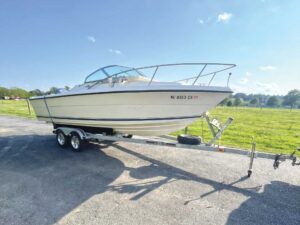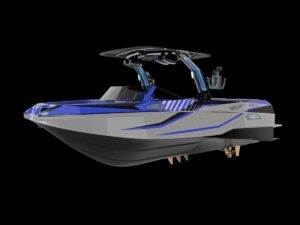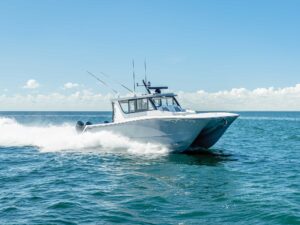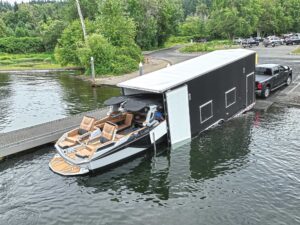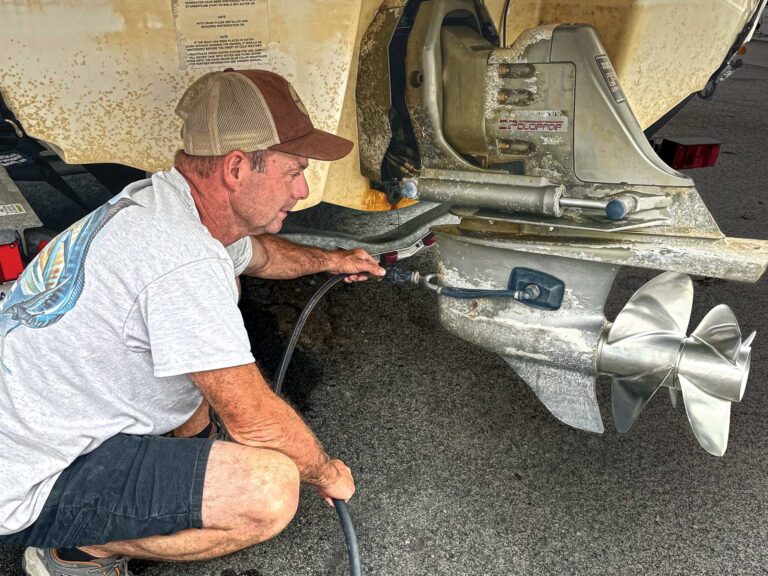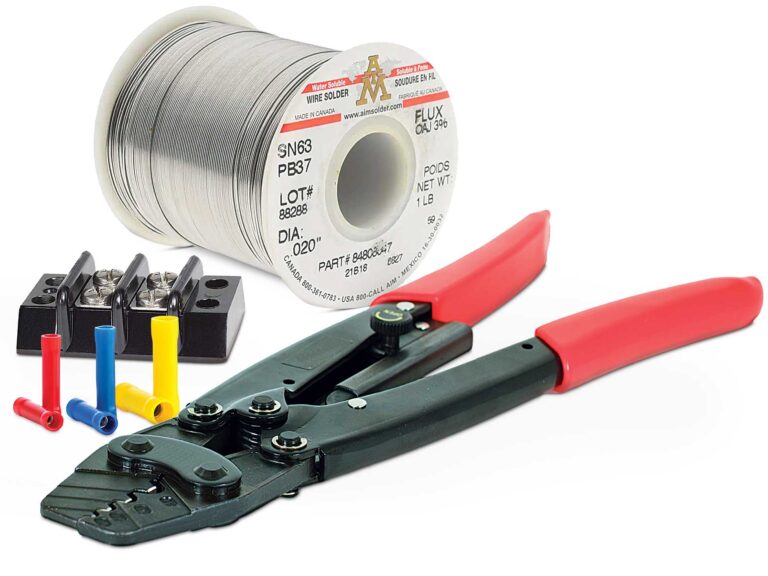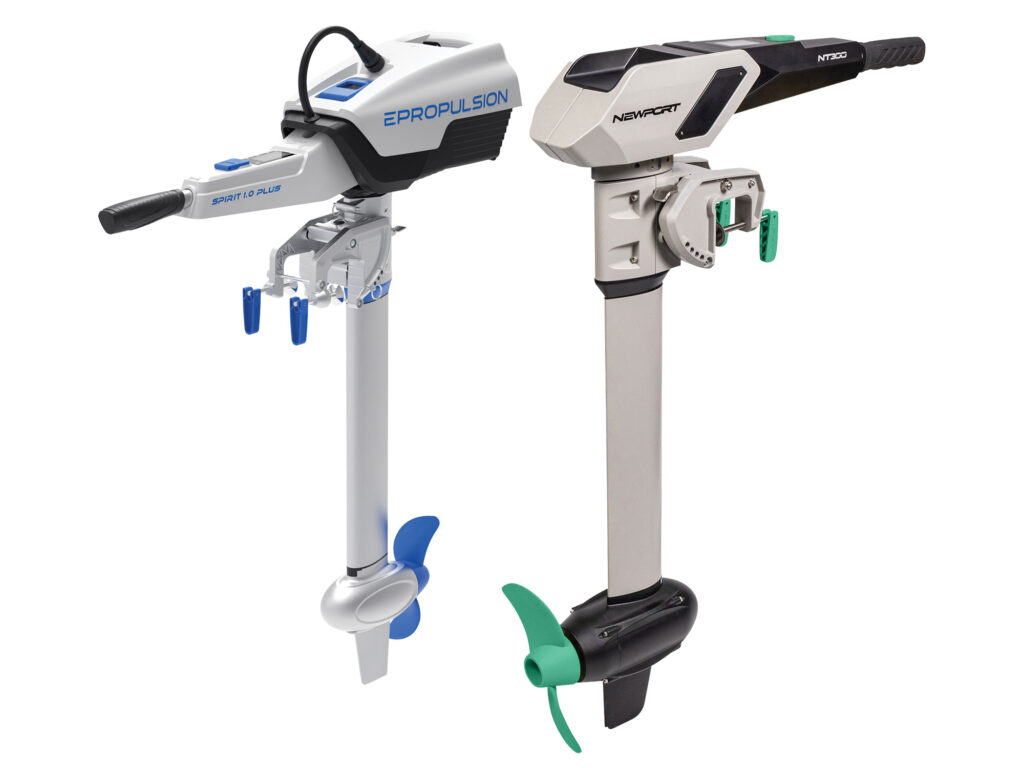
We tested two portable electric outboards from manufacturers Newport and E-Propulsion to see for ourselves what all the “buzz” is about. Carbon reduction aside, electric outboards do offer some perks.
Not having to fill or lug gas cans or spill fuel in the boat comes to mind. So does eliminating tiresome pull starts on cold mornings. Both motors are rated by the manufacturer as 3 hp gasoline-engine equivalents, making them practical choices for inflatable tenders, car toppers and other small boats.
One big difference between the E-Propulsion Spirit 1.0 Plus and the Newport NT300 is how each is powered. The Spirit 1.0 Plus includes an integral 48-volt lithium-ion battery that snaps onto the motor, while the NT300 connects to a separate 36V Li-ion marine battery, which takes up space in the boat. The Spirit 1.0 Plus battery weighs 19 pounds, yet it floats if dropped overboard. Installed, it provides a nice carry handle for the motor. Newport offers a battery, or you can use your own, which can be a cost savings.
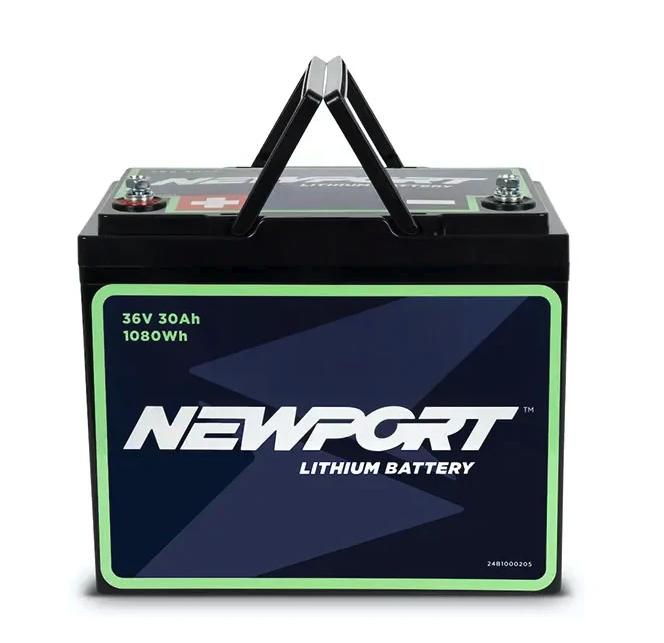
The NT300 tips the scales at 23.8 pounds, not including the battery (minimum 36 V/30 Ah Li-ion). Add the 24.3-pound Newport battery, and the combined weight equals 48.1 pounds. The Spirit 1.0 Plus weighs in at 23.4 pounds, and the removable battery weighs 19.2 pounds, for a combined weight of 42.6 pounds.
For comparison, a 4 hp Suzuki four-stroke outboard weighs 55 pounds and retails for about $1,650. The Spirit 1.0 Plus retails for $2,599 including the 48 V 1,276 Wh (about 27 Ah) Li-ion polymer battery and charger. The NT300 retails for $1,199, however, adding the Newport 30 Ah Li-ion battery ($949, including charger) brings the total to $2,148.
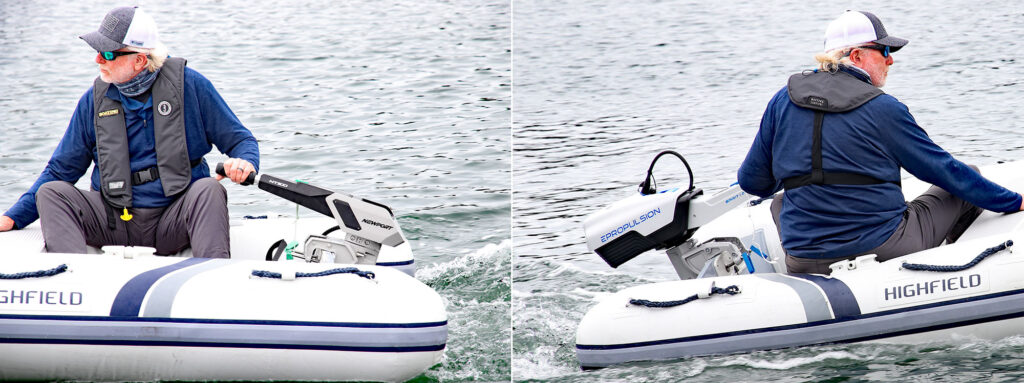
Both of these outboards delivered quick acceleration aboard the 8-foot Highfield roll-up inflatable—a typical stowable tender aboard many boats—that we used for testing. Pushing two 200-pound adults, the Spirit 1.0 Plus averaged 4.0 knots over several top-speed runs. The Newport averaged a top speed of 4.2 knots. Although both motors claim 3 hp equivalence, the Spirit 1.0 Plus is a 1 kW motor and the Newport NT300 is a 1.3 kW. This likely explains its slight speed advantage.
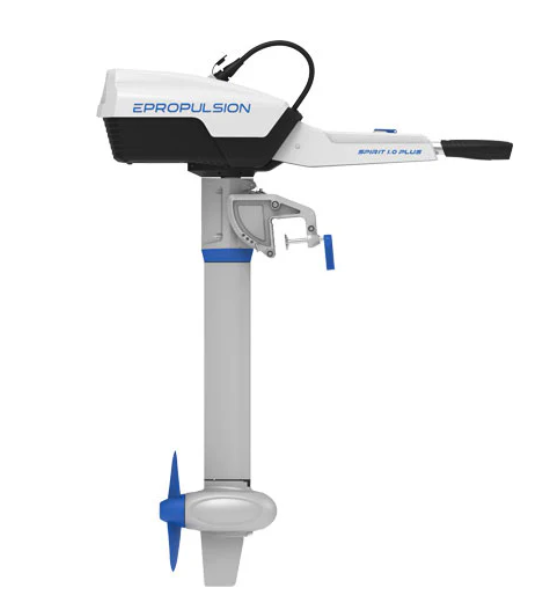
These outboards feature LCD displays that show power draw and battery status. The Spirit 1.0 Plus display indicated we could run for 1 hour, 19 minutes at wide-open throttle. Running at 25 percent throttle (at 2.5 knots) extended the run time to nearly 5 hours. The Newport display provided only power draw with battery-level bars. We would prefer it show run time as well. Newport’s battery is Bluetooth-capable, however, so you can monitor battery status with a mobile app. With time, an owner would learn to interpret that data. For comparison, Suzuki claims that its 4 hp gas outboard delivers 40 minutes’ run time at full throttle on the 0.26-gallon built-in fuel tank.
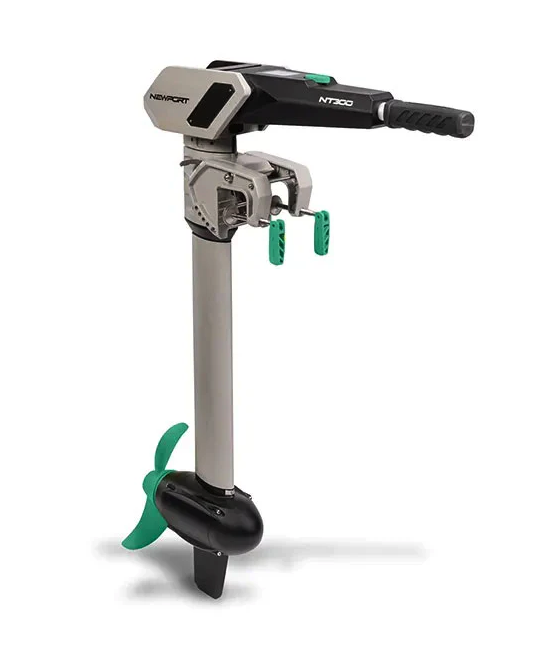
Quiet operation is another advantage of both of these electric outboards. Even running at full speed, they make just a slight whirring sound, quieter than portable internal-combustion outboards we’ve run. Such low noise would surely be appreciated by neighboring boats as you return from late-night yacht parties, or head out for an early-morning fishing session.
Read Next: Installing an Electric Motor on a Kayak
You’ll spend more for either of these than a comparable gas outboard. In return, you’ll get quieter operation and easier starts, and lose the inconvenience and potential hazards of carrying a gas can or worrying about ethanol or winterization. The choice is yours.

